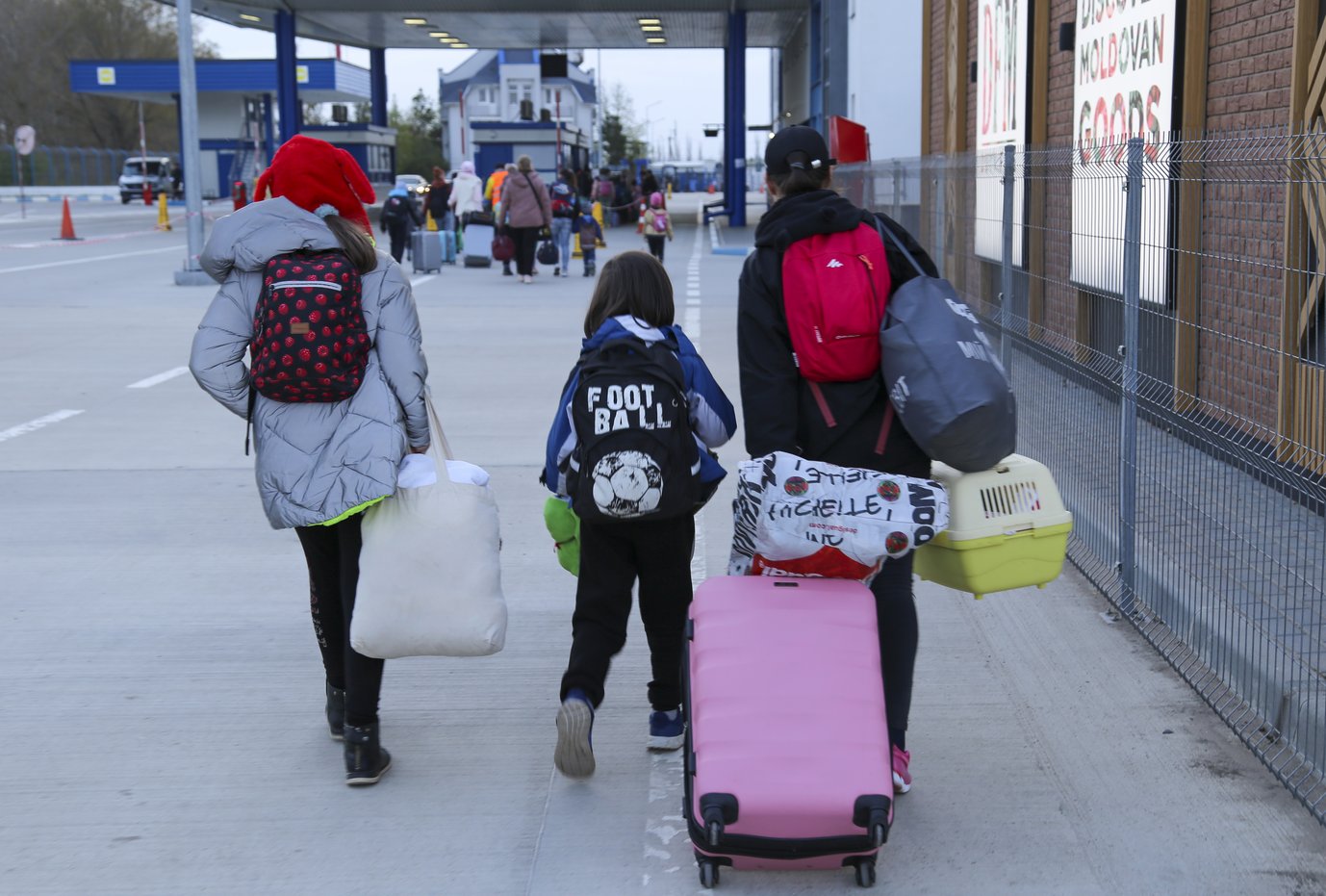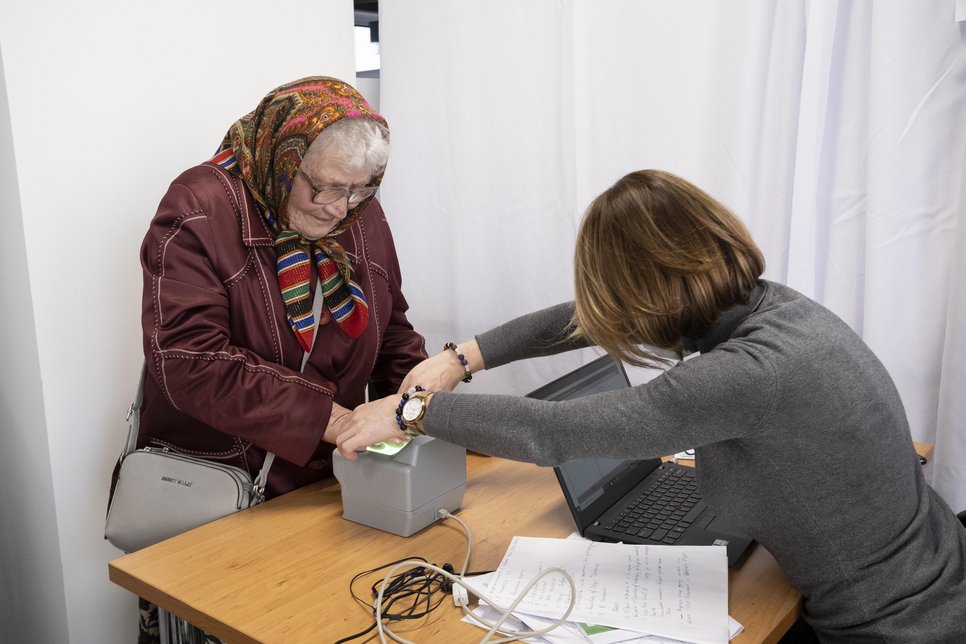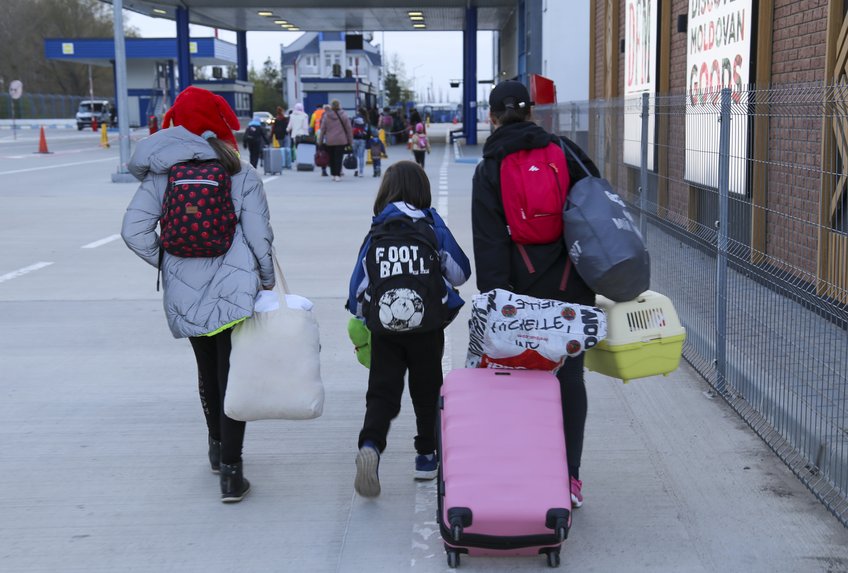The Assessment of Vulnerable Asylum Seekers’ Rights at the External Borders of the European Union

This post was also published as a part of a special issue of the Cahiers de l’EDEM, which was edited by Sylvie Sarolea, Zoé Crine, Eleonora Frasca, and Francesca Raimondo.
“The external borders of the European Union are […] a place where a common identity of internal security is affirmed”; in this excerpt from a communication regarding the management of the EU’s external borders, the Commission itself emphasizes that this form of management somehow reveals the direction the Union is taking in the construction of its identity. Recently, a tendency to strengthen the EU’s external borders can be observed, especially in the field of migration. The main lens through which developments in this matter are being guided is not, in fact, the protection of migrants’ fundamental rights, but rather the management and limitation of their arrivals on the territory of the Union. Amid these migrant flows, asylum seekers are particularly confronted with acute issues in the protection of their rights, and more so in the case of vulnerable groups. The balance between Member States’ desire for a stronger management of the EU’s external borders and their international and European obligations to protect human rights thus raises a particular question: how is the assessment of vulnerable asylum seekers’ rights at the external borders of the European Union likely to evolve?
First and foremost, the comprehension of the legal notion of vulnerability needs to be distinguished from the understanding of this term in the common sense. However, elaborating a clear definition of the legal notion of vulnerability is not an easy task, as its meaning is controversial. Vulnerability in asylum law is not merely assessed as a weakness or as being inherent to the person, but rather as the result of a set of circumstances or factors that has put that person in a specific situation exposing them to greater risks, thus requiring an adjustment of the common legal norm to their situation: therein lies the purpose of the incursion of this notion into the legal sphere. The translation of this social reality allows for the fundamental rights of vulnerable asylum seekers to be asserted. In fact, numerous key pieces of European legislation and their texts give the notion of vulnerability a prominent place, especially since the recast of the Reception Conditions, Asylum Procedures and Qualification Directives at the beginning of the 2010s. It is clear that these instruments of the Common European Asylum System have displayed an increasing incidence regarding the notion of vulnerability. In Articles 2 and 21, the Reception Conditions Directive understands the notion of vulnerability more precisely to be the presence of a specific criterion indicating to special needs, and necessarily, ensuing State obligations. The interrelationship between the specific criteria, special needs and the States’ obligations constitutes the legal scope of the notion. The Reception Conditions Directive qualifies the special needs related to vulnerability as a “primary concern for national authorities” in paragraph 14 of its preamble, and subsequently lists the classifications of asylum seekers classified as vulnerable in Article 21, among whom are mentioned: minors, disabled people, the elderly, pregnant women, victims of human trafficking, persons with serious illnesses, persons with mental disorders and persons who have been subjected to torture, rape or other serious forms of psychological, physical or sexual violence, such as the victims of female genital mutilation. Beyond that, the same directive expands the State obligations related to the material reception conditions of people with special needs. For instance, an asylum seeker with mental disorders will need, among other things, adapted medical and psychological assistance according to Article 19 of the Reception Conditions Directive, alongside special procedural guarantees surrounding the asylum procedure, according to paragraph 29 of the preamble of the Procedure Directive. A Member State that identifies the asylum seeker as a person with mental disorders will therefore fall under the obligation of providing said asylum seeker with the necessary support. Thus, this notion has a protective impact and the correlated State obligations provide—in theory—a response in terms of the social, medical, and legal support for vulnerable persons. These State obligations aim to enable vulnerable asylum seekers to acquire effective access to their right to asylum and to heighten vigilance in protecting their fundamental rights.
However, the borders constitute a sensitive area where security issues are all the more tangible, and where the protection of human rights is assessed to be even less of a priority by the European and national authorities. As such, the directives established a standard of protection at the borders for asylum seekers and for those most vulnerable, and which is set either by specific measures, or by the obligation to also apply all the measures enshrined in the directive at the borders, as provided for in Article 3 of the Reception Conditions Directive. However, the directives also provide for the possibility for Member States to conditionally derogate from some of these measures at the borders. For instance, Article 11 of the Reception Conditions Directive restricts the detention of minor asylum seekers to only be used as a last resort, and requires the separate detention of female and male asylum seekers. However, the scope of these protective measures is reduced by that same article when it comes to detention at the borders—be it internal or external—with potential derogations from these measures “in duly justified cases and for a reasonable period.” This perfectly illustrates the weak protection of the vulnerable asylum seekers’ rights at the borders and suggests the relevance of raising these issues within this paper.
A weak human rights protection and care framework of vulnerabilities at the external borders
The borders are specific places where the protection of vulnerable asylum seekers’ rights is weaker not only in the directives, but also in the practices that demonstrate that even the currently enforced protective measures are not sufficient to ensure respect for asylum seekers’ rights at the EU’s external borders. Specifically, there is a pattern that particularly contributes to the weakening of vulnerable asylum seekers’ rights at the external borders: the development and streamlining of border procedures, often coupled with precarious humanitarian conditions.
The Member States’ call to strengthen the EU’s external borders has led to questionable refoulement practices, which have likewise led to increased difficulty in accessing asylum, to limited material reception conditions, as well as to the deprivation of freedoms, practices which have been implemented without exception for asylum seekers with special needs despite a consistent European legal framework in this regard. This can be seen, for instance, in the management of the border crisis with Belarus and the European Commission’s proposal allowing the three Member States neighbouring Belarus—Lithuania, Latvia and Poland—to derogate from European directives in order to deal with the increasing arrivals that had been instrumentalized by the Belarusian government, with no attempt to identify vulnerable groups. At the legislative level, the Polish parliament approved a bill on October 14, 2021, strongly restricting access to its territory without individual examination. The material reception conditions induced by the Reception Conditions Directive have not been addressed at the external borders with Belarus, not only in terms of adequate housing arrangements, but also in terms of the required support, such as legal assistance or health care. This lack of a vulnerability identification mechanism remains a major concern for human rights defenders and academic research, as demonstrated in an article published by the VULNER project last November.
These already extremely questionable situations were presented as resulting from derogatory measures intended to address exceptional situations with inordinate pressure. The temporary precariousness of humanitarian conditions and the lack of consideration for vulnerabilities due to the standardization of border procedures might be extended temporally and spatially if the New Pact on Migration and Asylum were to be adopted, for reasons that will be explained in the following paragraphs.
The New Pact on Migration and Asylum: an obstacle to the protective impact of the legal notion of vulnerability
On September 23, 2020, the European Commission proposed the New Pact on Migration and Asylum, which encompassed a set of five texts and four recommendations that had been the result of discussions left in abeyance since 2016, and which were aimed at a thorough overhaul of the Common European Asylum System. Amid the proposed measures are the introduction of a border screening procedure, a regulation on the common asylum procedure introducing asylum procedures at external borders, the establishment of an asylum and migration management framework to reform the Dublin Regulation, a regulation on the management of crisis situations, and finally an amended proposal for the Eurodac regulation to provide more comprehensive information on asylum seekers. To date, the Pact has not yet been fully adopted as still remains the subject of debate and to be potentially adopted by the European Parliament and the Council of the European Union. However, the French presidency of the Council had set for itself the objective of advancing the debate on this issue during its mandate. On June 22, 2022, the Permanent Representatives at the European Union adopted negotiating mandates on two of the Pact’s texts, which are the Screening Regulation and the Eurodac Regulation. This adoption is in line with the broad political support that these texts received at the Council meeting on June 10, 2022. This represents a major step, the continuation on which will also depend on the European Parliament.
The global approach of the Pact aims at establishing special relationships between Member States over three watchwords: responsibility, solidarity, and trust. The EU has described the spirit of this Pact as representing “extraordinary steps to reconcile divergent perspectives”, “a long-term migration policy that can translate European values into practical management”, “a predictable and reliable migration management system” and as introducing “clear, fair and faster procedures” at the external borders. These terms actually suggest a philosophy that is far from responding to this paper’s concerns. The protection of human rights, let alone the vulnerable asylum seekers, is seemingly not the common thread of this Pact. The pillars of this Pact are predicated on the strengthening of the Union’s external borders, which would paradoxically become the epicenter of asylum policies in Europe. The streamlining of procedures is here even driven forward—the pre-entry screening procedure aims above all toward the rapid identification of those asylum seekers with a lower likelihood of being granted international protection, and therefore likely to be returned. Hotspots such as in Lesbos, Greece, which have been widely criticized by human rights defenders and agencies, would in some way be extended to all of the EU’s external borders.
Even though the common framework proposed by the Pact could be considered to stabilize the Union’s external borders, it reveals a crucial lack of protection for asylum seekers’ fundamental rights in many respects, and even more so for vulnerable groups. Its capacity to address vulnerabilities and the special needs of the vulnerable asylum seekers can indeed be questioned. Even before this proposal, paragraph 30 of the preamble of the Asylum Procedures Directive emphasized that if the special needs of a vulnerable asylum seeker in terms of special procedural guarantees cannot be met at the border—which is in fact often the case—then the applicant should be exempted from the border procedures. This already foresaw the possible incompatibility of such a system with an adapted consideration of vulnerable asylum seekers, due to a weaker capacity to identify and care for these groups at the border. Thus, the Pact attempted to counter this potential risk of the standard of protection being rolled back, with marginal adjustments for vulnerable groups. However, these adjustments appear to be far from sufficient.
The impossibility of a complete and sufficient identification system
Identification is the first and primary difficulty in dealing with vulnerabilities. Health and vulnerability checks during the border screening process are provided for by Article 9 of the Screening Regulation of the Pact, leaving it to the Member States to determine the authorities competent to carry out this screening, albeit without laying down any concrete framework or common standards. The Screening Regulation states that it must provide the identification of a vulnerability “where appropriate”, and that “if it is clear from the circumstances that such examination is not needed, in particular because the overall condition of the person appears to be very good, the examination should not take place and the person concerned should be informed of that fact”. The perspective of focusing on visible vulnerabilities is therefore made clear—and explicit in paragraph 27 of the negotiating mandate adopted by the Permanent Representatives Committee on June 22—although it is in fact a major issue in the vulnerability assessments. For instance, the Pact focuses on the identification of minors under the age of twelve—a low threshold that has no legal basis. This vulnerability-identification system would allow the authorities to make arbitrary decisions based on an asylum seeker’s appearance alone; for instance, when it comes to assessing the need to examine the person further. This system would also allow the Member States to be satisfied solely with the detection of visible vulnerabilities—when an effort at detection has been made at least—with a largely incomplete consideration of all vulnerabilities. Therefore, the Pact does not guarantee systematic identification and care, whereas this is mandatory according to the current European directives.

Focusing on visible vulnerabilities has long been criticized and has since been addressed by many Member States even though most vulnerability identification mechanisms still focus on noticeable features such as visible disability, pregnancy, or age. Unlike these visible vulnerabilities, numerous vulnerable groups may only display weak signals of vulnerability, without necessarily being less significant in their nature, severity, and special needs. Weak vulnerability signals make it difficult to identify related vulnerabilities, which can only be detected via a thorough individual examination carried out by trained professionals. A simplified questionnaire cannot permit the detection of vulnerabilities with weak signals; for instance, numerous forms of vulnerabilities due to gender-based persecutions may not be mentioned by the asylum seeker at the identification stage for at least two main reasons. First, a female victim of gender-based persecution may potentially be accompanied by her persecutor during the procedure, for instance in the case of human trafficking, domestic violence or forced marriage. Secondly, a victim of gender-based persecution may not be fully aware of the nature of the persecution she is experiencing, for instance in cases of domestic slavery. Studies have further revealed that the failure to mention certain forms of persecution by the asylum seeking-victims of gender-based persecution can also be explained by cultural dominance. Certain customary practices such as female genital mutilation or forced marriage may be perceived as a norm in a specific culture, and thus not be considered abnormal by the respective asylum seekers. An official in charge of the asylum seeker’s claim and aware of this cultural dominance thanks to proper training can act in an appropriate and understanding manner in order to overcome this influence. The possibility of such identification is however very unlikely to occur during border procedures.
The impossibility of systematic care for special needs correlated to the vulnerabilities
Once it has been established that a complete and systematic identification of those vulnerabilities cannot be realized within the framework that the Pact implies, the remaining measures provided for by the Pact with regard to vulnerable groups are of little relevance, given that the effectiveness of these measures depends on the presence of a complete mechanism for the detection of vulnerabilities.
We can still mention that the other elements of the more general framework of the Pact also display little concern for vulnerable groups regarding the two main aspects of the legal impact of the notion of vulnerability—the material reception conditions and the special procedural guarantees. First, the housing arrangements induced by the numerical pressure in these areas will certainly be unsuited to the special needs of vulnerable asylum seekers. Secondly, the Screening Regulation of the Pact states that if any vulnerability has been detected, the asylum seeker may be exempted from border procedures if the need arises—a protective measure that can be further stressed. The Screening Regulation of the Pact also suggests that these vulnerable asylum seekers could be directly referred to an accelerated asylum procedure. However, accelerated asylum procedures have amply demonstrated their inability to meet the special needs of vulnerable asylum seekers in terms of the special procedural guarantees intended to allow them effective access to the asylum procedure. Avoiding such accelerated procedures for vulnerable asylum seekers is recognized as a State obligation according to paragraph 30 of the preamble of the Asylum Procedures Directive. The reception of this obligation by Member States has, for example, been made customary in France by the law of July 29, 2015, stating that if an asylum seeker has been identified as vulnerable by the office in charge of asylum claims during the procedure, they can be rechanneled from an accelerated to a normal procedure, in order for their special procedural guarantees to be addressed and for such a case to be fully reviewed. The Pact’s proposal to allow the opposite is quite inconsistent with the current European and national standards of protection. Therefore, the possibility for vulnerable asylum seekers to express their fears in case of return would be weakened by a failure to address their needs in terms of special procedural guarantees, for instance regarding victims of gendered persecution who still struggle to be adequately examined.
Conclusion
Thus, a weakening of the acquis in terms of the protection of vulnerable groups’ rights can be observed, that has been coupled with an increased activism towards the reinforcement of external borders. As such, the legal basis developed and articulated at the beginning of the 2010s allowing for a growing legal incidence of the notion of vulnerability in the European asylum and migration law is now largely questioned. By increasing the number of obstacles—to mention only a few—and tightening the eligibility criteria for asylum claims, the European Commission demonstrates its ingenuity in further restricting access to the EU’s territory and to international protection. We can assume that the divergent viewpoints between Member States that had been observed so far were unfortunately not due to the measures’ lack of fundamental rights’ protection, but rather could only be understood in light of the underlying political tensions due to the constraints to be placed upon the Member States that this Pact implies.
One may conclude that the Pact needs to clarify and strengthen the framework for identification and care of vulnerable asylum seekers. Yet, the screening procedures, common asylum procedures, and deprivations of freedoms that the Pact implies are incompatible with effective identification and the provision of systematic, appropriate and sufficient care for vulnerable groups. Moreover, it should above all be added that if the Pact were to be adopted, the Member States’ mechanisms dedicated to vulnerable asylum seekers and refugees would only be effective if a vulnerability had been identified at the external borders—which is difficult for many vulnerable groups—or if the person had been able to lodge an asylum application in a Member State and if their vulnerability had been identified during that procedure—i.e. at a late stage. However, these Member States’ mechanisms dedicated to vulnerable groups, groups of which many are already fragile, would be even more weakened by the Pact.
Beyond the Pact, the management of the EU’s internal and external borders cannot be thought of in such a disregard for the European standards of protection. Specifically, the European Union has developed and articulated one of the legal orders most concerned with the protective legal scope of the notion of vulnerability, with a mature approach to this notion—albeit not fully delimited—alongside a multiplication of State obligations to care for vulnerable asylum seekers. It is thus paradoxical that this very same legal system today tends to prevent the legal impact of this notion. The European Union would thus weaken the legal basis that it has slowly built in this regard. If ever there could be such a deterioration, this would mean that the relevance of the notion of vulnerability would be merely theoretical and conceptual, and unfortunately without increasing the protection of the fundamental rights of these vulnerable groups. Hence, if we are unable to improve this standard, there is a dire need to be vigilant and hence a need to prevent any lowering of the current standard of protection for vulnerable persons.

